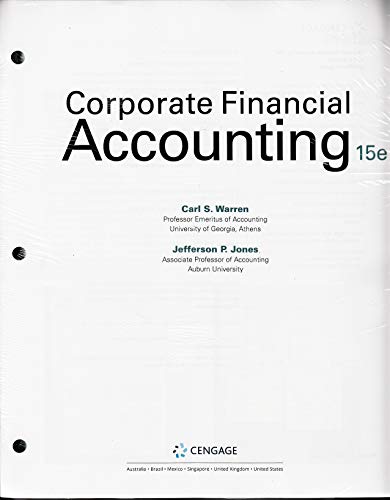Lower-of-cost-or-market inventory Obj. 6 Data on the physical inventory of Ashwood Products Company as of December 31
Question:
Lower-of-cost-or-market inventory Obj. 6 Data on the physical inventory of Ashwood Products Company as of December 31 follow:
Description Inventory Quantity Market Value per Unit
(Net Realizable Value)
B12 38 $ 57 E41 18 180 G19 33 126 L88 18 550 N94 400 7 P24 90 18 R66 8 250 T33 140 20 Z16 15 752 Quantity and cost data from the last purchases invoice of the year and the next-to-the-last purchases invoice are summarized as follows:
Last Purchases Invoice Next-to-the-Last Purchases Invoice Description Quantity Purchased Unit Cost Quantity Purchased Unit Cost B12 30 $ 60 30 $ 59 E41 35 178 20 180 G19 20 128 25 129 L88 10 563 10 560 N94 500 8 500 7 P24 80 22 50 21 R66 5 248 4 260 T33 100 21 100 19 Z16 10 750 9 745 Instructions Determine the inventory at cost and also at the lower of cost or market applied on an item-byitem basis, using the first-in, first-out method. Record the appropriate unit costs on the inventory sheet, and complete the pricing of the inventory. When there are two different unit costs applicable to an item, proceed as follows:
1. Draw a line through the quantity, and insert the quantity and unit cost of the last purchase.
2. On the following line, insert the quantity and unit cost of the next-to-the-last purchase.
3. Total the cost and market columns and insert the lower of the two totals in the LCM column.
The first item on the inventory sheet has been completed as an example.
Inventory Sheet December 31 Description Inventory Quantity Cost per Unit Market Value per Unit (Net Realizable Value)
Total Cost Market LCM B12 38 30 $60 $57 $1,800 $1,710 8 59 57 472 456 $2,272 $2,166 $2,166 AppendixLO1
Step by Step Answer:

Corporate Financial Accounting
ISBN: 9781337398176
15th Edition
Authors: Carl Warren, Jefferson Jones




